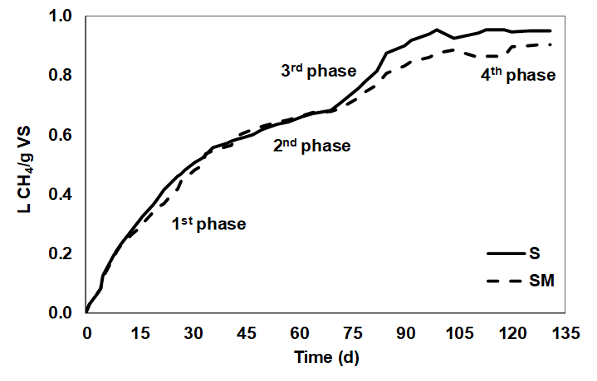 |
|
This work aimed to analyze the dynamics of methane production and the conditions leading to a transient-inhibited steady-state phase in anaerobic digestion of physically pretreated slaughterhouse wastewater. Mathematical analysis provided complementary information for applications at the real scale. The pretreatments consisted of autoclaving (120 °C, 1.2 atm, 60 min), which generated the semisolid, and homogenization (30000 rpm, 1 minute). The semisolid was the substrate for a biochemical methane production test, which was carried out at room temperature with a substrate to inoculum ratio of 3:1. The methane production kinetics were complex and followed a stepped curve with four stages: 1) an exponential phase, 2) a transient methanogenesis inhibition phase, 3) a recovery phase and 4) a stationary phase. FTIR analysis showed that both the wastewater and semisolid had high contents of aliphatic and nitrogen compounds, while anaerobic digestion led to reductions of amines I and II, other amides, and aliphatic structures and the production of several amino acids. Mathematical models employed to predict cumulative methane production (Gompertz, Richards, Luedeking-Piret, and Modified first-rate) showed a good fit and low percentage error, although none of them accurately forecasted the transient inhibited steady-state (2nd phase).
Keywords: acetic acid, ammonium, BMP tests, inhibited steady-state, methane kinetics.
|
|
 |

